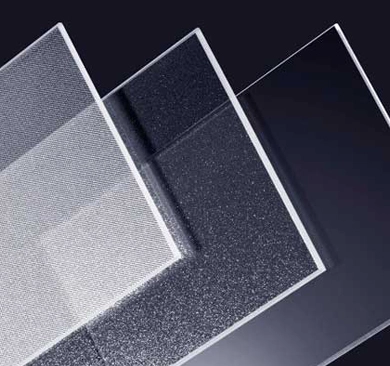
Solar glass is an innovative building material that's transforming the way we integrate renewable energy into structures. It goes beyond just being a window - solar glass incorporates solar cells directly within its panels, allowing it to generate electricity for the building. Solar glass harnesses the sun's energy through photovoltaic cells embedded within the panels. These cells convert sunlight into electricity that can be used to power the building, reducing reliance on the grid.
| Thickness | 3.2 |
| Dimension | max. 2250 x 3500 (annealed) 1150 x 2500 (tempered) |
| Pattern | ultra clear Solar glass transmittance: >92% Solar glass transmittance with AR: >94% |
| Iron Content | <120ppmFe2o3 |
| Poisson`s ratio | 0.2 |
| Density | 2.5g/cc |
| Young`s Modulus | 73GPA |
| Tensile strength | 50MPA |
| Resistance Curving Strength | 80mpa |
| Expansion Coefficient | 8.5x10(-6)/℃ |
| Softening point | 717℃ |
| Annealing point | 550℃ |
| Strain point | 500℃ |
Remarks:
All data are calculated using spectral measurements that are conform to standards ASHRAE standard(NFRC 100-2001).The tolerance of published data with respect to photometricproperties is +/- 3 points.The U-value tolerance is +/- 0.1 W/m2·K Specifications, technical and other data are based on information available at the time of preparation this document and are subject to change without prior notice. The value and performance data shown in the tables are test results and not performance guarantees.
1. Increased Efficiency
One of the most significant advancements in solar glass technology is the improvement in photovoltaic (PV) cell efficiency. Manufacturers have developed new materials and cell structures that capture a broader spectrum of sunlight and convert it into electricity more efficiently. Techniques such as PERC (Passivated Emitter and Rear Cell), bifacial cells, and multi-junction cells are examples of innovations that have significantly boosted solar cell efficiency.
2. Transparent Solar Glass
Transparent solar panels, a groundbreaking development, allow for the generation of electricity without obstructing light transmission. This technology uses transparent photovoltaic (TPV) materials that can be integrated into windows, facades, and skylights, turning buildings into energy-generating entities without compromising on aesthetics or natural lighting.
3. Building-Integrated Photovoltaics (BIPV)
Advancements in BIPV technology have enabled the seamless integration of solar cells into building materials, such as glass and roofing tiles. This not only helps in generating clean energy but also reduces material usage by serving dual purposes, e.g., as both a roofing material and a power generator. Innovations in BIPV also include customizable shapes, colors, and transparency levels, allowing for greater architectural flexibility.
Solar Photovoltaic (PV) Glass: This type of glass is integrated with photovoltaic cells, allowing it to convert sunlight into electricity. Solar PV glass is often used in building-integrated photovoltaics (BIPV), where the glass serves a dual purpose as both a building material and a power generator.
Solar Thermal Glass: This type of glass is used in solar thermal systems. It captures and utilizes solar energy for heating applications, such as solar water heaters. The glass may have coatings or features that enhance its ability to absorb and retain heat.
Transparent Solar Cells: Researchers are developing transparent solar cells that can be used as windows or skylights. These cells allow visible light to pass through while absorbing and converting non-visible light (such as ultraviolet and infrared) into electricity.
Smart Windows: Some glass technologies can switch between transparent and opaque states to regulate the amount of sunlight and heat entering a building. These smart windows can help with energy efficiency by reducing the need for heating, cooling, and artificial lighting.
The use of solar glass is part of the broader trend toward integrating renewable energy technologies into everyday infrastructure. It contributes to sustainable and energy-efficient building design by utilizing available sunlight to generate power or improve thermal performance.
Pls contact us if you have any inquire or questions, thank you.
No.12111, JINGSHI ROAD, LIXIA DIST, JINAN CITY, SHANDONG PROVINCE, CHINA